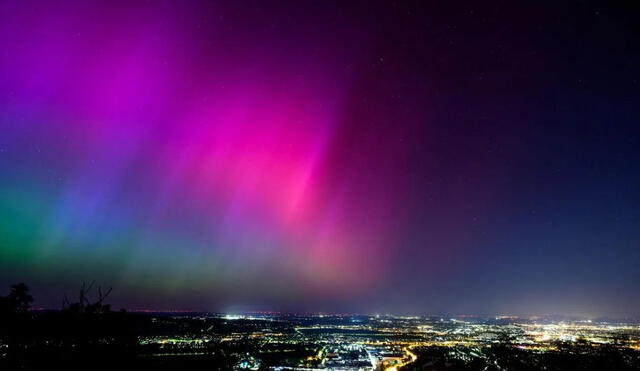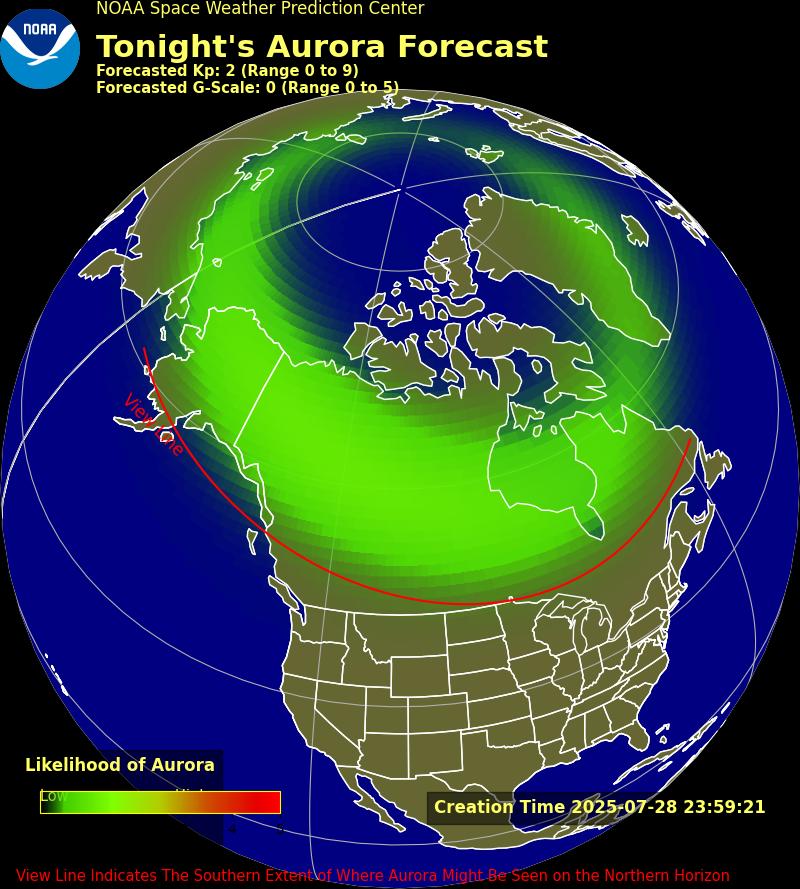Aurora alert: Which U.S. states could see northern lights amid geomagnetic storms?
A spectacular night sky show awaits in 15 states, as geomagnetic storms intensify.

Residents in 10 U.S. states might be in for a celestial treat tonight, as geomagnetic storms create ideal conditions for viewing the northern lights. According to the latest forecasts, the aurora borealis could light up the skies across some areas in the northern and central U.S., offering a rare opportunity for stargazers to witness this natural phenomenon.
The National Oceanic and Atmospheric Administration (NOAA) projects a stronger-than-usual forecast, which includes possible geomagnetic storm conditions from March 4 to March 5. As a result, around 10 states could potentially observe northern lights. These predictions are based on the intensity of the solar storm and local atmospheric conditions.
Geomagnetic storms fuel aurora borealis sight
The heightened aurora activity is being driven by a series of geomagnetic storms, triggered by solar flares and coronal mass ejections from the sun. These storms disrupt Earth’s magnetosphere, causing charged particles to collide with gases in the atmosphere and produce the vibrant colors of the northern lights. Some states in the far south could potentially see the aurora, depending on the intensity of the storms and local weather conditions.
While the northern lights are more commonly associated with regions near the Arctic Circle, geomagnetic storms can extend their visibility much further south. Tonight’s event is a reminder of the sun’s powerful influence on Earth’s atmosphere.
When and where to watch the northern lights?
Experts recommend heading to areas with minimal light pollution for the best viewing experience. The lucky U.S. states are:
- Alaska (highest chance)
- Washington
- Montana
- North Dakota
- South Dakota
- Idaho
- Minnesota
- Wisconsin
- Michigan
- Maine
- New York (some parts)
- Vermont (some parts)

The model uses maximum forecast geomagnetic activity (Kp) between 6pm and 6am US Central Time tonight and tomorrow night. Photo: NOAA.
If the geomagnetic activity intensifies, some states further south, might also catch a glimpse, such as:
- Iowa
- Nebraska
- Illinois
The best time to view the aurora is typically between 10 p.m. and 2 a.m. local time, when the sky is darkest. Observers are advised to look toward the northern horizon and use long-exposure photography to capture the vibrant colors of the northern lights.












